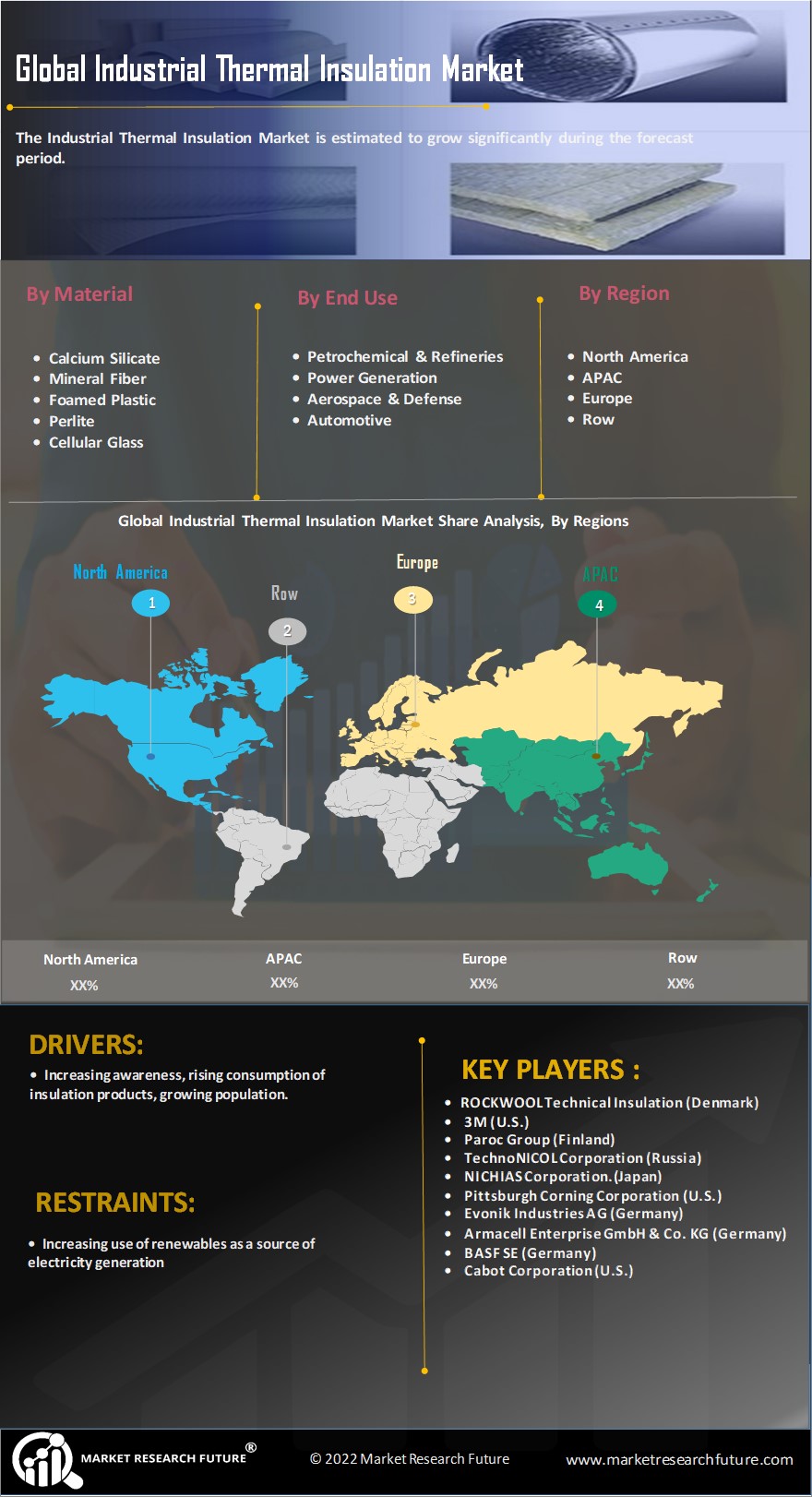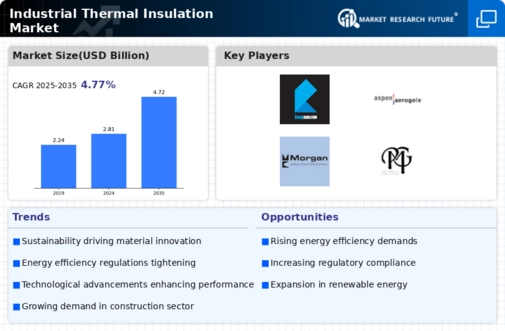Growing Demand for Energy Efficiency
The Global Industrial Thermal Insulation Market Industry is experiencing a notable surge in demand driven by the increasing emphasis on energy efficiency across various sectors. Industries are actively seeking solutions to minimize energy losses, which can lead to substantial cost savings. For instance, the market is projected to reach 2.81 USD Billion in 2024, reflecting a growing recognition of the importance of thermal insulation in reducing energy consumption. This trend is particularly evident in manufacturing and processing industries, where insulation plays a critical role in maintaining optimal temperatures and enhancing overall operational efficiency.
Regulatory Support for Sustainable Practices
Regulatory frameworks globally are increasingly favoring sustainable practices, which significantly influences the Global Industrial Thermal Insulation Market Industry. Governments are implementing stringent regulations aimed at reducing carbon emissions and promoting energy conservation. This regulatory support encourages industries to adopt thermal insulation solutions that comply with environmental standards. As a result, the market is expected to grow, with projections indicating a rise to 4.72 USD Billion by 2035. This growth is indicative of the industry's alignment with global sustainability goals, as companies strive to meet compliance requirements while enhancing their operational efficiency.
Rising Industrialization in Emerging Economies
The Global Industrial Thermal Insulation Market Industry is significantly influenced by the rapid industrialization occurring in emerging economies. Countries such as India and Brazil are witnessing substantial growth in their manufacturing sectors, leading to increased demand for thermal insulation solutions. As industries expand, the need for effective insulation to manage energy consumption and operational efficiency becomes paramount. This trend is expected to contribute to the market's growth, with projections indicating a rise to 4.72 USD Billion by 2035. The industrial boom in these regions presents opportunities for insulation manufacturers to cater to the evolving needs of diverse industries.
Increased Focus on Safety and Compliance Standards
Safety and compliance standards are becoming increasingly stringent across various industries, impacting the Global Industrial Thermal Insulation Market Industry. Companies are prioritizing the implementation of thermal insulation solutions to ensure compliance with safety regulations and to protect their workforce. Enhanced insulation not only improves energy efficiency but also contributes to a safer working environment by minimizing risks associated with temperature fluctuations. This heightened focus on safety is likely to drive market growth, as industries recognize the dual benefits of insulation in enhancing operational efficiency and ensuring regulatory compliance.
Technological Advancements in Insulation Materials
Innovations in insulation materials are transforming the Global Industrial Thermal Insulation Market Industry. The development of advanced materials, such as aerogels and vacuum insulation panels, offers superior thermal performance and durability. These technological advancements enable industries to achieve higher energy efficiency and lower operational costs. As companies increasingly adopt these innovative solutions, the market is anticipated to witness a compound annual growth rate of 4.82% from 2025 to 2035. This growth trajectory underscores the potential of cutting-edge insulation technologies to reshape industry standards and practices.















Leave a Comment